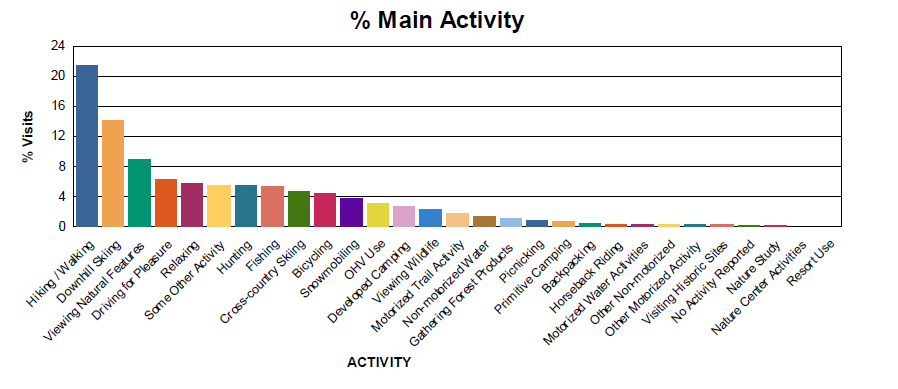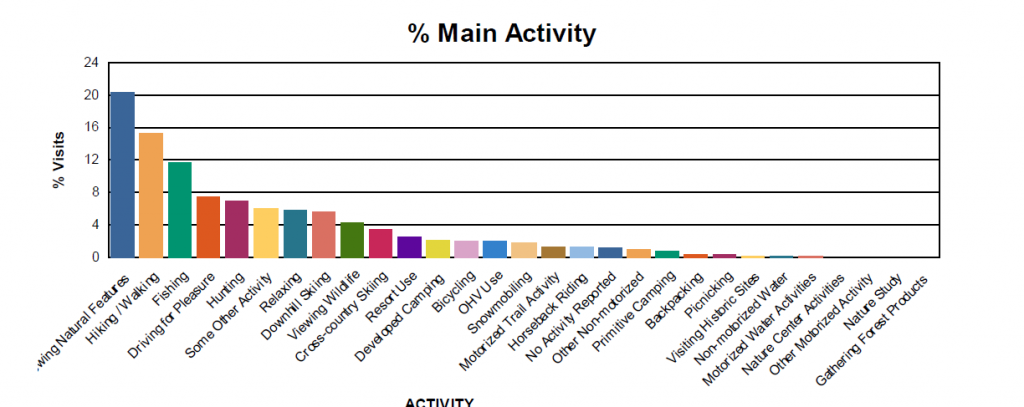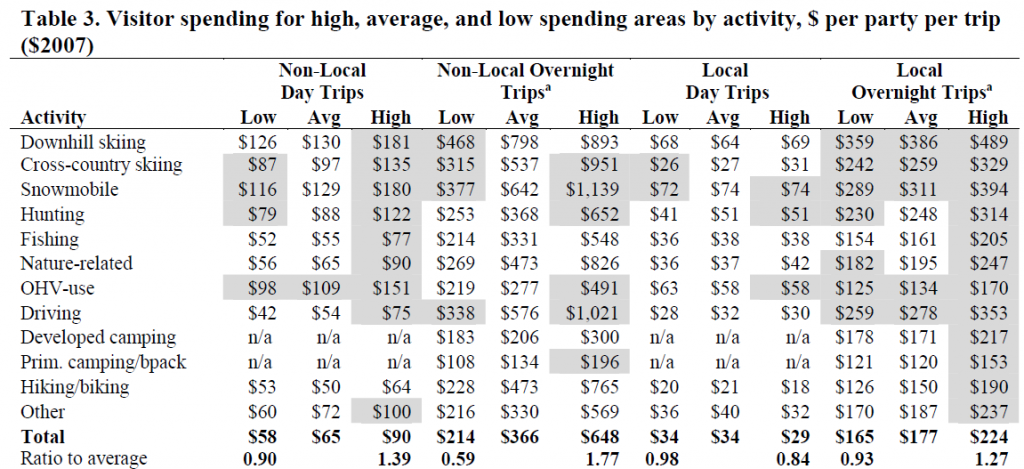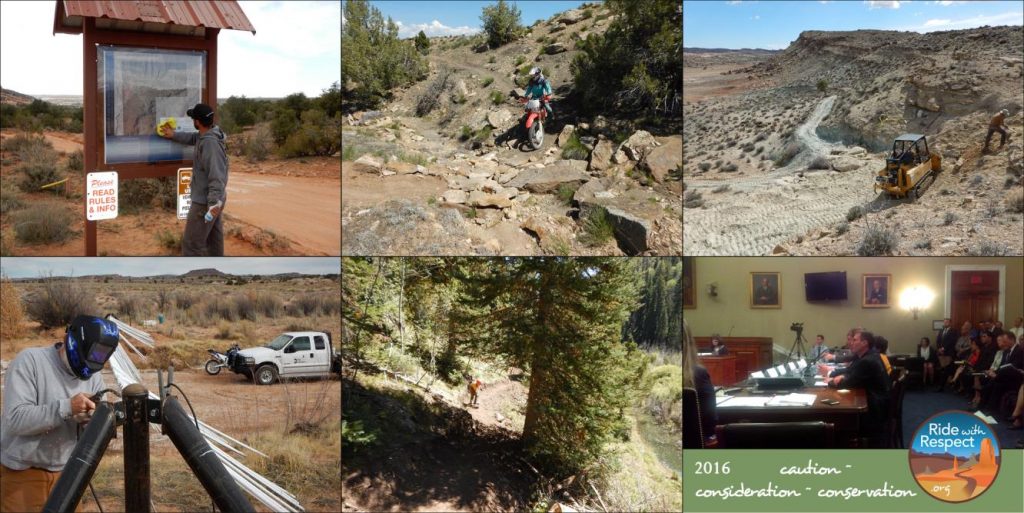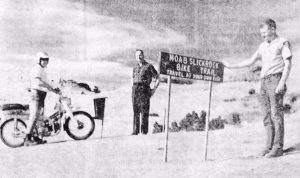Hermosa Watershed Management Plan
Columbine Ranger District
ATTN: Hermosa Comments
POB 439 / 367 South Pearl Street
Bayfield CO, 81122
RE: Hermosa Watershed Management Plan
Dear Matt:
Please accept this correspondence as the vigorous support of the above Organizations for Alternative 3 of the Hermosa Watershed Management Plan (“The Proposal”), which would improve multiple use opportunities to a greatest extent in the Hermosa planning area. While the additional single track (Dutch/Pinkerton) and side by side trails (Pasture Creek) may be short in terms of mileage, these routes would be highly valued by the OHV community and would add significant quality to the existing opportunities in the Hermosa Planning area. The loop opportunities provided by these new routes would dramatically improve recreational opportunities in the planning area. The Organizations have major concerns regarding the preferred Alternative as a result of the new “No Net Gain” standard that would be applied to trails in the Proposal area. The Organizations are vigorously opposed to Alternative 4 of the Proposal, due to the numerous conflicts with the intent of the Hermosa Watershed Legislation and numerous closures proposed. The Organizations are also concerned that Alternative 4 provides for expanded quiet use opportunities in the SMA area, without addressing that the Legislation provided expanded quiet recreational opportunities in the new Wilderness areas designated, which was vigorously supported by the representatives of quiet users over the numerous years needed for development of the Legislation.
The Organizations are also concerned that much of the science relied on in the Proposal could be more accurately summarized as the “most restrictive” theory rather than “best available science” on the issue. The Organizations submit that when best available science is relied on for planning, Alternative 3 provides a very balanced recreational opportunity with minimal risks to wildlife. The Organizations will address the specific components of Alternative 3 to allow for meaningful input on the merits of Alternative 3 above all others and why these standards or issues are important to the community. We do not intend this to be an exhaustive list of each component but is provided to allow for understanding of why we believe Alternative 3 is the best and to show this decision is not merely based on the highest number of trail miles.
We start first with a brief description of each Organization, in order to allow a complete understanding of our concerns. The Colorado Off-Highway Vehicle Coalition (“COHVCO”) is a grassroots advocacy organization of 150,000 registered OHV users in Colorado seeking to represent, assist, educate, and empower all OHV recreationists in the protection and promotion of off-highway motorized recreation throughout Colorado. COHVCO is an environmental organization that advocates and promotes the responsible use and conservation of our public lands and natural resources to preserve their aesthetic and recreational qualities for future generations.
The Trail Preservation Alliance (“TPA”) is a Colorado based 100 percent volunteer organization whose intention is to be a viable partner, working with the United States Forest Service (USFS) and the Bureau of Land Management (BLM) to preserve the sport of trail riding. The TPA is an advocate of the sport and takes necessary actions to help insure that the USFS and BLM allocate to trail riding a fair and equitable percentage of access to public lands.
The Colorado Snowmobile Association (“CSA”) was founded in 1970 to unite winter motorized recreationists across the state to enjoy their passion. There are 30,000 registered snowmobiles in the State of Colorado. CSA seeks to advance, promote and preserve the sport of snowmobiling in Colorado by working with Federal and state land management agencies and local, state and federal legislators. For purposes of this document CSA, COHVCO and TPA are identified as “the Organizations”.
1. Columbine RD staff assistance was deeply appreciated in developing the Hermosa Legislation.
The Hermosa Special Management Planning area was specifically designated in the Hermosa Creek Watershed Protection Legislation of 2014, which recognized the importance of continued motorized recreation in the planning area and removed various Wilderness review standards in the area. Over the several years of development of this Legislation, Organizational representatives welcomed the open and candid discussions with Columbine RD staff on a wide variety of issues that arose in the planning efforts and hope to continue those discussions moving forward.
2. Pasture Creek and Dutch/Pinkerton trail expansions would significantly improve recreational experiences in the area and provide unique learning experiences for managers.
The Organizations vigorously support the proposed 7 miles of new Side by Side trails adjacent to Pasture Creek Area that are badly needed from a recreational experience perspective as the 64 inch side by side market is a rapidly growing sector of the recreational motorized community. The Organizations are aware that District staff are more than aware that a designed trail often provides the best recreational experience and is the most desired type of trail to the user group that the trail is designed for. This position is simply restated in these comments to highlight the value of these trails to the 64 user groups.
The Organizations believe the dedicated 64 inch trails would also provide a rather unique learning opportunity for district staff and management throughout the region, as the Organizations are not aware of any 64 inch width trails currently on any Ranger District inventory in the state of Colorado. This small trail network could provide unique insights into the needs and challenges of these larger vehicles, which the Organizations expect are going to present different challenges than traditional full size vehicles. This would allow managers to learn about issues similar to the fact that a 50 inch side by side cannot traverse some 50 inch trails due to the larger vertical size of the vehicle resulting in the cage of the vehicle contacting overhead obstacles in areas where the trail may be off camber or in turning situations. Additional understanding could be developed regarding vehicle length and the 64 inch class of side by sides contains a wide range of length vehicles. From a purely management perspective, the designed 64 inch trails would provide an on the ground laboratory for land managers to gather information on maintenance needs for this type of trail, as the 64 inch side by side are significantly smaller and lighter than a full size vehicle but larger and heavier than a traditional ATV. While the consensus is that the level of maintenance needed for these routes is in between a full size and ATV (50 inch) trail, the knowledge of the exact comparison would be valuable information for managers throughout the region.
The Organizations are also aware that single track trail riding opportunities are some of the most sought after trail experiences in the state. While the Columbine RD has a reasonable number of miles of single track motorized trails, these types of routes are almost non-existent in many other areas of the state. Alternative 3 provides for a short but significant new single track looped trail network around the Dutch/Pinkerton area based on existing logging roads in the area, which would be highly valuable to the motorized community and would expand the high quality recreational opportunities for those using the area. This loop opportunity would again be highly valued by the motorized community and would also be a valuable resource for the mountain biking community.
Alternative 3 also provides several other opportunities that would be unique and highly valued by the entire recreational community. Alternative 3 provides the most dispersed camping opportunities in the area, which area gain becoming difficult to obtain and allows the Coral Draw Trails to be added to motorized inventory and provides for the Proposed connector trail to Purgatory Ski area in the summer would allow the unique opportunity for recreational users to access the ski area for dining and other resources. Again the Organizations must stress that each of these components may seem a small change in terms of mileage but when taken as a whole, the Organizations vigorously submit that recreational opportunities will be vastly improved for all users. As outlined later in these comments, when “best available science” is applied to the Proposal, rather than the “most restrictive” theory, the risks from these significant recreational improves becomes very viable to implement.
3. Wilderness/RNA designations along Hermosa Creek should be released.
The motorized community has been a major funding partner with the Columbine Ranger District to address basic maintenance issues and help mitigate possible impacts from all recreational activity through CPW OHV grants provided to the District in an attempt to off-set the effects of the ever reducing federal budgets. In the formation of the Hermosa Legislation, there was serious concern about the long term financial sustainability of the Hermosa Creek Trail due to the steep and rugged terrain in the area increasing the costs of basic maintenance. While the Legislation cannot offset the costs resulting from the geographic challenges in maintaining the Hermosa Creek trail, the Legislation was seen as a vehicle that could reduce the administrative barriers that might result in an increased cost to maintain the trail.
As a result of these concerns, the boundary of the Congressionally designated Wilderness was moved from the center of the creek to the current boundary generally west of the Hermosa Creek in the Legislation. It was believed that the release of the recommended Wilderness in the Forest Plan in this manner would streamline the maintenance of Hermosa Creek Trail and allow for any rerouting of the trail to address possible impacts to the creek or to create a safer easier to maintain trail. This would allow federal recreation budgets supplemented by State OHV grant funds to be used for the maintenance of the Hermosa Creek trail and other routes in the most effective manner. Additionally support for moving the boundary to the west side of Hermosa Creek would also streamline any creek management activity to improve habitat or for other reasons, which was again supported by a wide range of the interest groups involved in the Legislation’s development. As a result the Organizations vigorously support the release of the recommended Wilderness/ Research Natural Area boundary in the corridor along Hermosa Creek as proposed in the Plan as the Organizations vigorous believe this boundary change will significantly improve recreation in the region due to the significantly reduced and streamlined maintenance costs and that the release was specifically reviewed and supported in the development of the Legislation.
4. No net gain standards for roads and trails directly conflict with Hermosa Legislation, are vigorously opposed and completely unnecessary.
The Organizations are vigorously opposed to the implementation of anything resembling a “no net gain” standard for roads and trails in the planning area, as such a planning standard is more restrictive than current management and would be a significant limitation on the area in the future. Often site specific proposals are moved forward, such as Pasture Creek or Pinkerton trails expansions, even when they are not included in the preferred alternative when the need for these routes becomes more clear, and these developments would be precluded by implementation of a “no net gain” for roads and trails is applied.
The future management of the Hermosa SMA created by the Hermosa Legislation directly and specifically addresses the requirements for the development of roads and trails in the planning area, as again this was a major issue in the development of the Legislation and efforts of the working group. The Hermosa Legislation specifically and clearly states:
“(I) New permanent or temporary road construction or the renovation of existing nonsystem roads, except as allowed under the final rule entitled “Special Areas; Roadless Area Conservation; Applicability to the National Forests in Colorado” (77 Fed. Reg. 39576 (July 3, 2012)).” [1]
It is without contest that dispersed motorized recreational usage is a characteristic of a Colorado Roadless area and also that trails are outside the scope of Roadless Rule applicability by law and are also specifically recognized as something that is a permitted activity in a Colorado Roadless area.
“The final rule does not prohibit use of existing authorized motorized trails nor does it prohibit the future development of motorized trails in CRAs (see 36 CFR 294.46(f)). The final rule allows continued motorized trail use of CRAs if determined appropriate through local travel management planning.”[2]
The Organizations also note that standards similar to a no net gain for trails was explored in the development of the Colorado Roadless Rule and almost no support for such a standard was found. The Organizations vigorously assert that the imposition of a “no net gain” standard for trails in the SMA directly and materially conflicts with the Hermosa Legislation which clearly provides for the construction of trails in compliance with the Colorado Roadless Rule. As a result the imposition of such a standard must be removed from any version of the final plan to avoid conflict with several Federal laws.
In addition to conflicting with the governing federal law, the imposition of a “no net gain” in roads and trails conflicts with inventory of Proposal area performed relative to Colorodo Roadless Rule development. During this planning process most of the SMA was specifically reviewed for possible inclusion in Upper Tier Roadless designations and found to be unsuitable for this lower level of protection. The following maps provide the boundaries for the areas inventoried under Alternative 4 and Alternative 2 for possible designation as an Upper Tier.
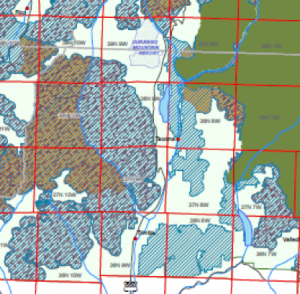
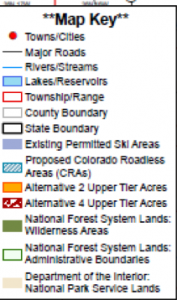
[3]
The Organizations must question why there is now found to be a basis for the application of a “no net gain” standard, when the area has recently been inventoried for lower levels of protection and found to be unsuitable for the lower levels of protection. It is significant to note that a “no net gain” standard was sought after by several parties within the Hermosa Working group and little support for such a standard was found.
The Organizations must also question the basic need for a “no net gain” standard as this standard simply is not addressed in the draft EA. The failure to address this standard in the NEPA documentation is a violation of NEPA itself and as a result the standard should be stricken as the public does not have the ability to comment on the standard. This simply must be avoided as it conflicts with the specific provisions of the Hermosa Legislation which specifically allow for trail construction pursuant to the Colorado Roadless Rule in the SMA and conflicts with numerous inventory in the SMA area and the clearly stated intent of the working group.
5. Snowfall is the best trigger for determining when to start winter travel management.
The Organizations also vigorously support the determination that the best trigger for determining when OSV regulations should take effect is snowfall as it more accurately reflects usage of the area now and in the future. Add scoping comments here
6. Motorized recreation is a significant economic driver to the Southwestern Colorado region.
OHV recreation is predominately a family sport and multiple use access is a major factor involved in many other activities, such as hunting, fishing and private lands ownership. The Organizations are aware that funding of any recreational activity can be difficult as many traditional sources of revenue to local communities and land managers has reduced and as a result communities are now forced to rely on recreational activity to provide basic services to their citizens. As a result of this situation, the Organizations believe that understanding the ramifications of any decisions impacting recreational activity is of paramount importance. The Colorado Off- Highway Vehicle Coalition in partnership with Colorado Parks and Wildlife, the US Forest Service and Bureau of Land Management have recently released new research on the economic contribution of motorized recreation in Colorado. The Southwestern Colorado region receives more than $195 million in annual sales and economic contribution which results in more than 2,800 jobs and almost $21 million in State and local tax revenue. A complete version of the study has been submitted for your reference. Given the significance of this activity to local economies, the Organizations submit that providing the most recreational opportunity is a major concern to local communities who are often struggling to provide basic services to their residents.
In addition to this landscape level spending review recently conducted by COHVCO, the USFS has conducted extensive research into comparative spending profiles of various recreational users as part of the US Forest Service’s National Visitor Use Monitoring process, and this research is highly valuable to planners in terms of comparing spending profiles of users and allowing planners to estimate changes in visitation and impacts that this has on local economies. The works of Drs. Styne and White performed in conjunction with NVUM research provide the following conclusions in their research on comparative user group spending:
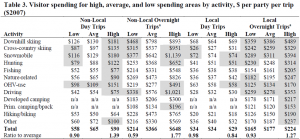
[4]
It should also be noted that the Stynes and White work provided an itemized breakdown of most spending categories identified above to allow for more meaningful analysis and application of this information on a project specific level. This site specific review identifies the benefits from having higher spending profile users addressed and the significant benefits that follow to other user groups as a result.
7. General Wildlife Concerns are well balanced with recreational interests in Alternative 3 of the Proposal.
The Organizations are aware that often there is concern regarding the possible impacts to wildlife as a result of recreational activity in any area, and would note that a vibrant and healthy wildlife population in any area is a major component of providing a quality recreational experience. The Organizations are aware that numerous seasonal closures are put in place in the Proposal in order to protect wildlife during more sensitive times, such as calving or winter range and that great efforts have been made in the placement of any routes to be built to avoid any issues with wildlife or resource impacts. The Organizations are aware that such efforts have been highly effective in addressing these issues on the Columbine Ranger District for decades and there is no reason to expect a change in these levels of protection from these management efforts and tools in the Proposal area.
The Organizations will note that possible motorized recreational impacts to wildlife are an issue that has been heavily researched in the Yellowstone National Park for an extended period of time. This research has uniformly concluded:
“Based on these population-level results, we suggest that the debate regarding effects of human winter recreation on wildlife in Yellowstone is largely a social issue as opposed to a wildlife management issue. Effects of winter disturbances on ungulates from motorized and non-motorized uses more likely accrue at the individual animal level (e.g., temporary displacements and acute increases in heart rate or energy expenditures) than at the population scale. A general tolerance of wildlife to human activities is suggested because of the association between locations of large wintering ungulate herds and winter recreation. Habituation to human activities likely reduces the chance for chronic stress or abandonment of critical wintering habitats that could have significant effects at the population level, especially when these activities are relatively predictable.”[5]
Given the clear statement of wildlife management experts on the minimal impacts of recreation on wildlife, the Organizations submit that wildlife concerns should be minimal and significant documented planning standards can be relied on in the defense of Alternative 3 of the Proposal. Many of these standards also show the lack of basis in many of the more protective standards proposed in the other Alternatives.
While the Organizations understand any managers desire to proceed with caution if a species may be listed on the Endangered Species List, this possible listing of a species should also not be over relied on as many species are found unwarranted for listing and there are literally thousands of species which have been reviewed for listing. The US Fish and Wildlife Service has also been working hard to review the entire listing process under ESA to avoid the continued use of a possible listing decision to end around the NEPA process that a petitioner often did not become involved with and to avoid the listing process becoming a trump card in the collaborative process regarding management of public lands. These revisions have included allowing more time for research of challenges facing a species, heightened thresholds for the listing process, requiring more collaboration prior to accepting a petition to list a species and only allowing one species to be addressed per petition. By allowing management that is overly cautious with a possibly listed species, these efforts of the USFWS would simply become ineffective in streamlining the entire process and allowing what are very limited management dollars to be effectively used to benefit species on the ground.
8. Document reviews from anti access user groups addressing wildlife concerns with motorized recreation must be critically reviewed.
The Organizations submit that up to date science must be relied on in the analysis of the Project and possible impacts or management challenges and that survey documents created by user groups opposed to multiple use are not a substitute for best available science. The Organizations submit that too often the Proposal analyzes the usages under the “most restrictive” or most cautious scientific theory. Compounding concerns about “most restrictive” scientific theory being applied for planning is that often these standards have been specifically superseded by new management documents which were designed to address the reasons for previous caution in analysis. As a result of the advancing nature of scientific analysis, many impacts noted in the Proposal are based on “most restrictive scientific theory on issues that best available science has subsequently determined are unrelated to challenges facing the species.
The Organizations would be remiss if the reliance on the works of Switalski[6], asserted to be “Best Management Practices for OSV management” was not specifically addressed as the Organizations are intimately familiar with this document as it is readily available on the Winter Wildlands website. [7] This is simply a propaganda document created by those opposed to multiple use recreation, rather than a survey of best available science on the issue and the Organizations submit that this is exactly the type of document that must be strictly reviewed by planners. Representatives of the Organizations have attempted to discuss our concerns about the basic validity of the document with WWA representatives and have not had any success. We have included the American Council of Snowmobile Associations 2014 “Facts and Myths about Snowmobiling on Winter Trails” booklet in order to provide a complete background of all research on OSV travel in an timely and balanced manner.
The Organizations submit that Switalski/WWA document best management practices standards were BADLY out of date at the time the document was published in 2015, and believe several examples of the out of date nature of the document. The Organizations submit that the grim picture of multiple use recreation portrayed in this document has inappropriately impacted both summer and winter travel decisions in the Proposal. After a review of the booklet, the Organizations believe this document to be an attempt to move their Organizations mission of “snow less traveled” than a true survey of best available science on many issues as many studies have been repeatedly superseded or completely inaccurately summarized in this work. The Organizations submit that while the scope of the Switalski document may be limited to OSV issues, clearly the document has a chilling effect on OHV travel related issues, and possibly explains the basis for summer travel standards such as the “no net gain” for roads and trails previously discussed. As a result, the Organizations vigorously assert that this work must be addressed with extreme caution and not relied on as an accurate survey of best available science.
The Organizations have included the recently updated “Fact and Myths about snowmobiling and winter trails ” book from the American Council of Snowmobile Associations, which summarizes the most up to date information on a variety of OSV issues. While some of the resources relied on in this publication are older, they remain valid findings on issues that really have been resolved for research purposes and have not been superseded by later works or decisions. The Organizations submit the Facts and Myths book represents the most accurate and up to date review of OSV issues available today.
The Organizations believe a complete review of best available science and the position conveyed in the WWA brochure on each issue is not warranted but the Organizations believe several examples of the quality of low quality information or badly outdated nature of the information provided in this document are sufficient to substantiate our inclusion of this issue in our comments. The Organizations believe that the first step in developing truly effective management of any issue is establishing the landscape level standard, as many factors are heavily influenced by activities that are totally unrelated and beyond management by the USFS.
The Organizations believe the first relevant example of outdated and misleading information being provided in the WWA brochure involves OSV emissions. The EPA has been specifically developed to address vehicle emissions and air quality and the USFS should not be addressing these types of issues in travel planning as the USFS expertise is not in air quality and emissions standards. The Organizations vigorously assert that landscape level standards are as follows that all units being produced and used in Colorado are well below EPA requirements for these types of vehicles and often these agencies find that localized air quality issues are totally unrelated to OSV travel. The WWA brochure provides the following information:
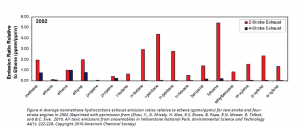
[8]
The Organizations believe this information might have been helpful to land managers in the decision making process in 2002 but have to question the value of this information decades later as the overwhelming percentage of 2002 snowmobiles simply are no longer in use. Newer snowmobiles are more cost effective to ride, more reliable and operate in full compliance with EPA air quality requirements, which have reduced the number of emissions from this class of vehicle by more than 100%. These EPA standards are reflected in the following air quality standards:
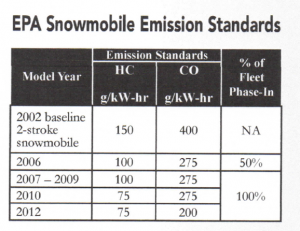
[9]
The Organizations would note that any snowmobile manufactured after 2012 may only produce ½ the emissions that a 2002 unit was allowed to produce. The Organizations are aware that most new units are producing emissions far below even EPA standards for these types of vehicles. The Organizations have to question the relevance of any emissions information for vehicles that were produced more than a decade ago and are no longer used. Again the Organizations must question if assertions regarding the relevance of 2002 emissions outputs decades after those emissions standards have been superseded is truly relying on best available science.
The Organizations submit that this is not the only time that severely limited or questionably relevant information is provided in the WWA brochure. The WWA brochure also provides summaries of Water/Air Quality studies that are inaccurate at best and are sometimes simply erroneous. An example of such a summary involves the Musselman study, which the WWA brochure attempts to summarize as follows:
“During the winter, snowmobiles release toxins such as ammonium, nitrate, sulfate, benzene, and toluene which accumulate in the snowpack (Ingersol 1999), and increase acidity (Musselman and Kormacher 2007).”[10]
The Organizations submit that any summary of the Musselman work which attempts to support such a position is misleading and frustrating to the snowmobile community, as the snowmobile community partnered in the development of this study in an effort meaningfully address issues and develop parking facilities at the study location. The Musselman study clearly stated their conclusions as follows:
“Seasonal differences were evident in air chemistry, specifically for CO, NO2, and NOx, but not for NO or O3. NO2 and NOx were higher in summer than winter, while CO concentrations were higher in winter than summer. Nevertheless, air pollutant concentrations were generally low both winter and summer, and were considerably lower than exceedence levels of NAAQS.”[11]
“Nevertheless, an air pollution signal was detected that could be related to snowmobile activity; but the pollutant concentrations were low and not likely to cause significant air quality impacts even at this high snowmobile activity site.”[12]
The Organizations submit that many summaries of issues in the WWA brochure such as this are facially erroneous. The Organizations have never asserted that motors used for OSV recreation do not produce certain levels of emissions, as that would simply be insulting to all parties involved. Rather researchers have asserted these issues are very minimal in nature when addressing any landscape level emissions that might be in an area as these new units are both EPA and CARB compliant. Even when OSV emissions are addressed locally, they are found to be insufficient to warrant any further monitoring.
The Organizations believe that lynx management standards again provide a shocking example of the systemic usage of out of date information in the WWA brochure. The WWA brochure clearly asserts that “no net gain” remains the rule for OSV travel in lynx habitat, stating as follows:
“The Canada Lynx Assessment and Conservation Strategy set planning standards on Forest Service lands that include, “on federal lands in lynx habitat, allow no net increase in groomed or designated over-the-snow routes and snowmobile play areas by Lynx Analysis Unit… and map and monitor the location and intensity of snow compacting activities that coincide with lynx habitat, to facilitate future evaluation of effects on lynx as information becomes available” (USDA FS 2000, p.82).”[13]
The Organizations do not object that this was a relevant summary of research in 2000, as research on the lynx was exceptionally limited in 2000 and no net gain was temporarily relied on for management of these areas. The Organizations believe that research in 2000 on this issue was more aptly summarized as identifying the numerous gaps in research rather than a scientifically based management plan. As these gaps in research were resolved, new management guidelines were periodically released for management of lynx habitat and as a result the 2000 LCAS has been superseded by the Southern Rockies Lynx Amendments in 2008 and the 2013 release of the updated Lynx Conservation Assessment and Strategy, which was signed and developed in partnership with the USFS. These management documents have clearly moved away from the “no net gain” standard and towards a truly science based management structure. The 2013 LCAS specifically addresses new research on many recreational issues as follows:
- The 2013 LCAS specifically and clearly superseded all previous planning documents and clearly states that the 2013 LCAS is now the definitive planning document for lynx issues in federal land planning; [14]
- Recreational usage of lynx habitat is a second level threat and not likely to have substantial effects on the lynx or its habitat. Previous theory and management analysis had placed a much higher level of concern on recreational usage of lynx habitat; [15]
- Lynx have been known to incorporate smaller ski resorts within their home ranges, but may not utilize the large resorts. Dispersed motorized recreational usage certainly does not create impacts that can be equated to even a small ski area; [16]
- Road and trail density does not impact the quality of an area as lynx habitat;[17]
- There is no information to suggest that trails have a negative impact on lynx; [18]
- Snow compaction from winter recreational activity is not likely to change the competitive advantage of the lynx and other predators;[19]
- Snow compaction in the Southern Rocky Mountain region is frequently a result of natural process and not recreational usage; [20]
- Winter recreational usage of lynx habitat should only be “considered” in planning and should not be precluded given the minimal threat this usage poses to the lynx; and [21]
- Failing to manage habitat areas to mitigate impacts of poor forest health issues, such as the spruce and mtn pine beetle, is a major concern in lynx habitat for a long duration.[22]
The Organizations believe that the conflict between the 2000 LCAS relied on in the Winter Wildlands brochure and accurate up to date management standards clearly provided in the 2013 LCAS is immediately apparent, and the Organizations would be remiss in not addressing this conflict to prevent reliance on badly out of date information and research. Given that the WWA/Switalski document was not released until 2 years after the release of the 2013 LCAS, the Organizations submit there was more than enough time to provide accurate information in the WWA/Switalski survey. The Organizations submit that the failure to reflect best available science on the lynx casts a shadow over the reliability of the entire document.
Since the release of the 2013 LCAS, Colorado Parks and Wildlife has also explicitly addressed Canadian Lynx issues in Colorado, which have resulted from the successful reintroduction efforts of the lynx in Colorado as follows:
“Lynx have successfully been re-established in Colorado and a self-sustaining population is believed to persist in the region. The management actions taken to re-establish the population to Colorado were done considering the landscape of the time – there is no intention of attempting to change, alter or remove historic and current land uses from the landscape. Many of these industries can and have developed practices that have the potential to allow the long term persistence of the lynx within the context of existing land use.”[23]
Given these clear statements from both Federal and State species management experts that OSV usage is not impacting the Canadian Lynx and that there should not be any changes in land use as a result of lynx activity and position that closing any area to OSV would benefit the Canadian Lynx would be inaccurate and conflicting with best available science.
The Organizations believe that a comparison of the Wolverine management standards from the USFWS and the WWA brochure again provides evidence of the lack of scientific basis for much of the WWA brochure. The WWA brochure summarizes Wolverine management standards as follows:
“Key management schemes for protecting wolverine include limiting disturbance and retaining and restoring habitat connectivity. Managers can reduce the potential conflict with snowmobiles and wolverine by identifying areas of overlap and managing accordingly.”[24]
This management position simply cannot be reconciled with recent USFWS listing decisions regarding the Wolverine that convey a very different standard for the management of recreational activities in Wolverine habitat. USFWS management specifically states:
“there should be no changes to forest management as the result of an area being designated as habitat”.[25]
While there was concern regarding the climate change being identified as the primary threat to the Wolverine in the most recent listing decision that ended in determination that the Wolverine was not warranted for listing as threatened or endangered, no concerns were registered regarding the accuracy of these management position that was taken with regard to general forest management standards. Given the clarity of these USFWS statements, the Organizations again are concerned that best available science has not been relied on for the development of the WWA brochure.
The Organizations are very concerned that the WWA/Switalski document was heavily relied on for the development of other portions of the Proposal as well as often the Switaski document is cited as authoritative on issues, such as possible concerns about subnivean activity from OSV travel.[26] The Organizations would note that the WWA/Switalski document is not research but rather is a summary of research and never mentions subnivean impacts. Any actual planning should be relying on actual research rather than an interpretation of that study, as this is a significant difference.
The Organizations would note that subnivean activity might be a concern in areas with exceptionally minimal snowfall. The ACSA facts and myths book provides a detailed review of research that repeatedly concludes there is no relationship between OSV travel and subnivean activity or impacts to small plants, in areas This is simply not the case in the Hermosa area where dozens of feet of snow are not uncommon and often snowfall holds in many areas throughout the year or at least well into the summer. The Organizations would note that subnivean impacts might be an issue in certain parts of the country, but the Hermosa watershed simply is not one of these areas due to the exceptional snowfall commonly found in the area.
9. White Tailed Ptarmigan populations are stable in areas with OSV usage.
The Organizations are also aware that concerns were raised regarding potential negative impacts to White Tailed Ptarmigan possibly in the Hermosa area as the Ptarmigan status is since 2012 is “Under Review” with the US Fish and Wildlife Service for possible listing , which is a surprising concern for the species as the Ptarmigan remains an actively hunted species in Colorado.
The USFWS specifically concluded in their 2012 determination to review the status of the White Tailed/ Southern Ptarmigan for possible listing on the Endangered Species list that :
“This finding is based on information provided under factors A and E. The information provided in the petition and available in our files under factors B, C, and D is not substantial. During the status review, we will fully address the cumulative effects of threats discussed under each factor.”[27]
Given that recreational usage is specifically identified as factor B in the USFWS analysis, the Organizations fail to understand how a lack of information could be relied on as the best scientific information available for the basis of closing the area.
In the 2015 Colorado Parks and Wildlife State Wildlife Action Plan, CPW experts on the Ptarmigan also specifically concluded as follows:
“In response to the petition to list the WTPT under the ESA, CPW conducted statewide occupancy surveys to develop a baseline distribution of the WTPT. These surveys demonstrated that WTPT are widely dispersed across the state in suitable habitats, with little change from historic distributions.”[28]
Other recognized experts have made similar conclusions regarding the human/Ptarmigan relationship as follows:
“There is little evidence of population fluctuations in Washington due to human related activities, although overgrazing by domestic sheep may be a problem in some areas. ” [29]
Given these exceptionally clear statements that recreational and other human activities are not negatively impacting Ptarmigan populations, the Organizations must question how best available science could be relied on to create a management position that closures of an area to OSV/OHV travel were necessary to protect Ptarmigan populations in the area. Such a proposal simply could not be reconciled with best available science regarding the threats to the Ptarmigan species.
10. Conclusion.
Please accept this correspondence as the vigorous support of the above Organizations for Alternative 3 of the Hermosa Watershed Management Plan (“The Proposal”), which would improve multiple use opportunities to a greatest extent in the Hermosa planning area. While the additional single track (Dutch/Pinkerton) and side by side trails (Pasture Creek) may be short in terms of mileage, these routes would be highly valued by the OHV community and would add significant quality to the existing opportunities in the Hermosa Planning area. The loop opportunities provided by these new routes would dramatically improve recreational opportunities in the planning area. The Organizations have major concerns regarding the preferred Alternative as a result of the new “No Net Gain” standard that would be applied to trails in the Proposal area. The Organizations are vigorously opposed to Alternative 4 of the Proposal, due to the numerous conflicts with the intent of the Hermosa Watershed Legislation and numerous closures proposed. The Organizations are also concerned that Alternative 4 provides for expanded quiet use opportunities in the SMA area, without addressing that the Legislation provided expanded quiet recreational opportunities in the new Wilderness areas designated, which was vigorously supported by the representatives of quiet users over the numerous years needed for development of the Legislation.
Please feel free to contact Scott Jones at 518-281-5810 or by mail at 508 Ashford Drive, Longmont, CO 80504 for copies of any documentation that is relied on in this correspondence or if you should wish to discuss any of the concerns raised further.
Respectfully Submitted,
Scott Jones, Esq.
CSA President
TPA & COHVCO Authorized Representative
Don Riggle
Director of Operations
Trails Preservation Alliance
[1] See, Hermosa Legislation @ §3(B)(5)(iv)(I) identified on page A-3 of Proposal.
[2] See, US Dept. of Agriculture; 36 CFR Part 294;Special Areas; Roadless Area Conservation; Applicability to the National Forests in Colorado; Final Rule; Federal Register / Vol. 77, No. 128 / Tuesday, July 3, 2012 / Rules and Regulations 35976 at pg 39580VerDate
[3] A complete copy of this map is available for download and further review at: https://www.fs.usda.gov/Internet/FSE_DOCUMENTS/stelprdb5366311.pdf
[4] See; White and Stynes; Updated Spending Profiles for National Forest Recreation Visitors by Activity; Nov 2010 at pg 6.
[5] US Park Service; White and Davis; Wildlife response to motorized recreation in the Yellowstone Park; 2005 annual report; at pg 15.
[6] See, Proposal at p 184.
[7] See, Winter Wildlands Alliance website at http://winterwildlands.org/wp-content/uploads/2015/06/BMP-Final.pdf
[8] See, WWA booklet at pg 7.
[9] See, ACSA Fact and Myths book at pg 7&8.
[10] See, WWA brochure at pg 12.
[11] See, Robert C. Musselman & John L. Korfmacher; USFS Air Quality at a snowmobile staging area and snow chemistry on and off trail in a rocky mountain subalpine forest, Snowy Range Wyoming. 2007 at 332
[12] See, Musselman at 333.
[13] See, WWA Booklet at pg 11.
[14] See, Interagency Lynx Biology Team. 2013. Canada lynx conservation assessment and strategy. 3rd edition. USDA Forest Service, USDI Fish and Wildlife Service, USDI Bureau of Land Management, and USDI National Park Service. Forest Service Publication R1-13-19, Missoula, MT at pg 1. (Hereinafter referred to as the 2013 LCAS)
[15] See, 2013 LCAS at pg 94.
[16] See, 2013 LCAS at pg 83.
[17] See, 2013 LCAS at pg 95.
[18] See, 2013 LCAS at pg 84.
[19] See, 2013 LCAS at pg 83.
[20] See, 2013 LCAS at pg 26.
[21] See, 2013 LCAS at pg 94.
[22] See, 2013 LCAS at pg 91.
[23] See, 2015 CPW State Wildlife Action Plan at pg 173.
[24] See, WWA Booklet at pg 11.
[25] USFWS summary fact sheet available here http://www.fws.gov/idaho/Wolverine/WolverineProposed4dRule031113.pdf
[26] See Proposal at pg 137.
[27] See, DEPARTMENT OF THE INTERIOR Fish and Wildlife Service 50 CFR Part 17 Endangered and Threatened Wildlife and Plants; 90-Day Finding on a Petition To List the Southern White- Tailed Ptarmigan and the Mt. Rainier White-Tailed Ptarmigan as Threatened With Critical Habitat Federal Register /Vol. 77, No. 108 /Tuesday, June 5, 2012 at pg 33155
[28] See, CPW COLORADO DIVISION OF PARKS AND WILDLIFE REPORT WESTERN ASSOCIATION OF FISH AND WILDLIFE AGENCIES December 2012 – Full Report – at pg 3
[29] See, Schroeder; Birds of Washington: Status and Distribution (2015) at pg 68.






